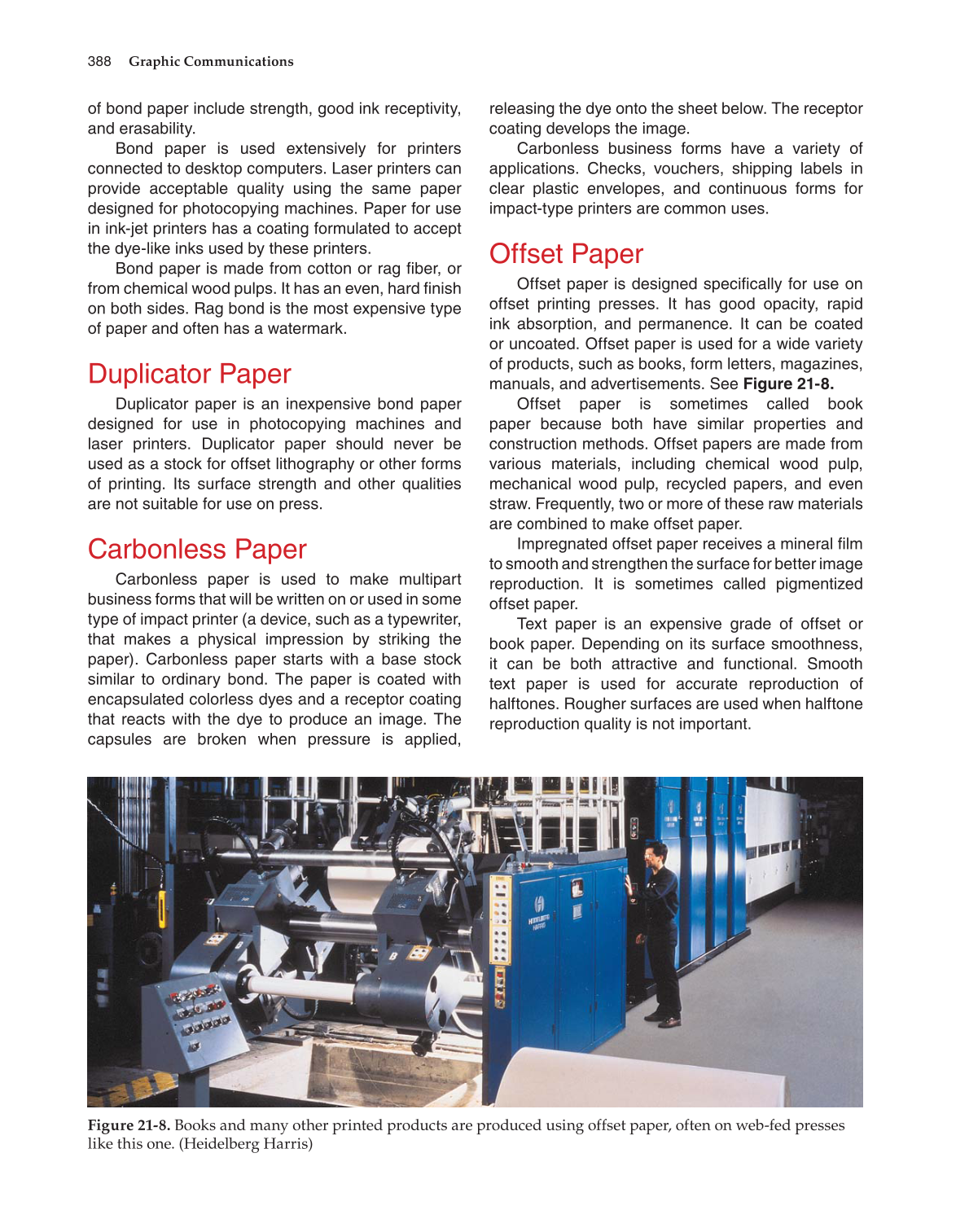388 Graphic Communications
of bond paper include strength, good ink receptivity,
and erasability.
Bond paper is used extensively for printers
connected to desktop computers. Laser printers can
provide acceptable quality using the same paper
designed for photocopying machines. Paper for use
in ink-jet printers has a coating formulated to accept
the dye-like inks used by these printers.
Bond paper is made from cotton or rag fi ber, or
from chemical wood pulps. It has an even, hard fi nish
on both sides. Rag bond is the most expensive type
of paper and often has a watermark.
Duplicator Paper
Duplicator paper is an inexpensive bond paper
designed for use in photocopying machines and
laser printers. Duplicator paper should never be
used as a stock for offset lithography or other forms
of printing. Its surface strength and other qualities
are not suitable for use on press.
Carbonless Paper
Carbonless paper is used to make multipart
business forms that will be written on or used in some
type of impact printer (a device, such as a typewriter,
that makes a physical impression by striking the
paper). Carbonless paper starts with a base stock
similar to ordinary bond. The paper is coated with
encapsulated colorless dyes and a receptor coating
that reacts with the dye to produce an image. The
capsules are broken when pressure is applied,
releasing the dye onto the sheet below. The receptor
coating develops the image.
Carbonless business forms have a variety of
applications. Checks, vouchers, shipping labels in
clear plastic envelopes, and continuous forms for
impact-type printers are common uses.
Offset Paper
Offset paper is designed specifi cally for use on
offset printing presses. It has good opacity, rapid
ink absorption, and permanence. It can be coated
or uncoated. Offset paper is used for a wide variety
of products, such as books, form letters, magazines,
manuals, and advertisements. See Figure 21-8.
Offset paper is sometimes called book
paper because both have similar properties and
construction methods. Offset papers are made from
various materials, including chemical wood pulp,
mechanical wood pulp, recycled papers, and even
straw. Frequently, two or more of these raw materials
are combined to make offset paper.
Impregnated offset paper receives a mineral fi lm
to smooth and strengthen the surface for better image
reproduction. It is sometimes called pigmentized
offset paper.
Text paper is an expensive grade of offset or
book paper. Depending on its surface smoothness,
it can be both attractive and functional. Smooth
text paper is used for accurate reproduction of
halftones. Rougher surfaces are used when halftone
reproduction quality is not important.
Figure 21-8. Books and many other printed products are produced using offset paper, often on web-fed presses
like this one. (Heidelberg Harris)
